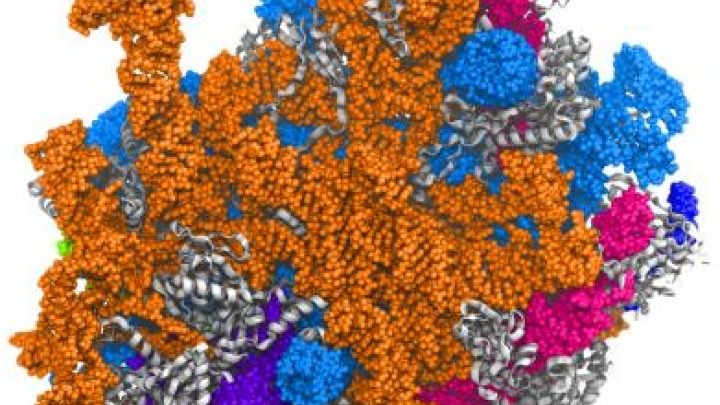
New atomic-level snapshots provide a map for the development of anti-parasite drugs
A related group of single-celled parasites are responsible for an array of debilitating and deadly tropical diseases including African sleeping sickness, leishmaniasis and Chagas’ disease. A lack of effective medicines and vaccines, as well as growing resistance to current therapies have spurred researchers to search for new ways to fight the pathogens.
A team of researchers from the University of Michigan Life Sciences Institute, Weizmann Institute of Science and Hebrew University-Hadassah Medical School have now obtained the first high-resolution snapshots of the parasites’ ribosome — molecular machinery inside the cells that assemble proteins — providing a detailed map of its structure to aid the design of new drugs.
Their findings, acquired using cryo-electron microscopy, were published June 30 in Cell Reports.
The unique features that make the Trypanosomatid parasites’ ribosome distinct from other eukaryotes are what make it such an attractive drug target, says study senior author Georgios Skiniotis, Ph.D., a faculty member of the LSI, where his lab is located, and associate professor of biological chemistry in the U-M Medical School. “You need to be able to attack the pathogen without harming the host’s cells,” he says.
Previous studies were able to obtain resolutions of 5.6 angstroms and 12 angstroms. The new study obtained a resolution of 2.8 angstroms — which revealed a nearly complete atomic structure and new functional details, notes senior study author Ada Yonath, Ph.D., the Martin S. and Helen Kimmel Professor of Structural Biology at the Weizmann Institute, and winner of the 2009 Nobel Prize in Chemistry for her work on the structure and function of ribosomes.
Moran Shalev-Benami, Ph.D., a postdoctoral fellow at the Weizmann Institute, and Yan Zhang, Ph.D., a postdoctoral fellow at U-M, were co-first authors.
Go to Article
2.8-Å Cryo-EM Structure of the Large Ribosomal Subunit from the Eukaryotic Parasite Leishmania, Cell Reports. DOI: 10.1016/j.celrep.2016.06.014


